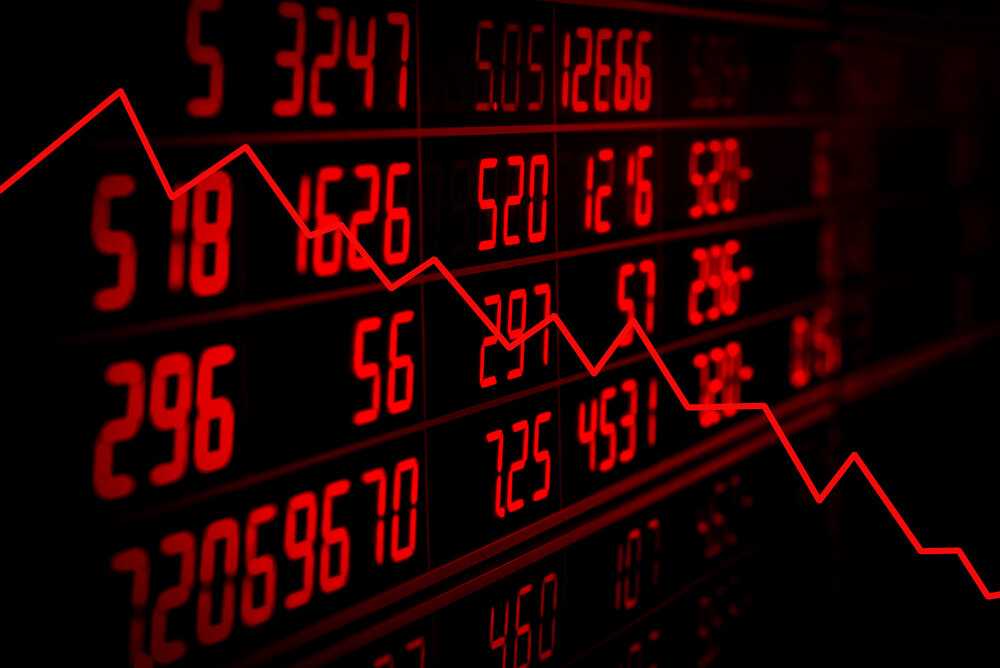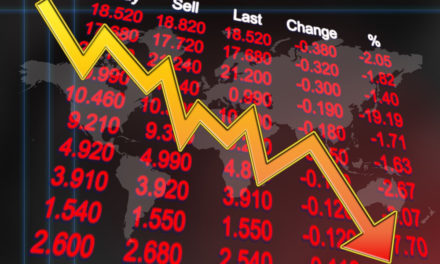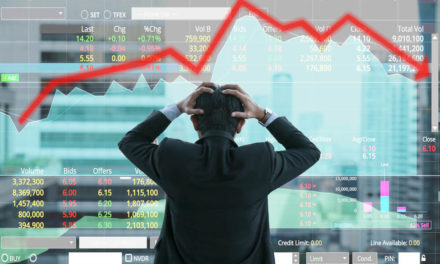If an all-out trade war is about to erupt between China and the U.S., analysts say the entire 2019 rally on Wall Street could be at risk.
The volatility on Wall Street this week shows it is trying to come to terms with the fact that tariffs on $200 billion in Chinese goods were raised from 10% to 25% at midnight Friday, and equities that rallied nearly 18% during 2019 are now down four straight days and heading for the worst week of the year.
While impossible to get a good estimate of potential losses, here is a compilation of what experts are saying:
Via Bloomberg:
Rally of 2019 ‘Quickly’ Goes Away
For Anthony Saglimbene, a global market strategist at Ameriprise Financial, the S&P 500 at 2,900 is fair based on the current state of earnings and the economy. The flare-up has already sent it below 2,850 and with the threat of more tariffs, that level could drift lower.
“If we have this global flare up in trade tensions and we actually see more tariffs put on, then I think markets could very quickly give back 5 to 10% very easily,” he said in an interview at Bloomberg’s New York headquarters. “If we get to a point in the escalation where we’re actually slapping tariffs on all Chinese imports and you have China coming back and retaliating through various measures, then I think as quickly as we’ve seen the last four months be positive, we could quickly see that go away. However, the U.S. economy is fairly isolated, it’s a closed economy. We should continue to do OK, but it’s just not a great environment. And really it comes down to profits — profit margins, sales trends, those could all be more serious.”
Calculating the Profit Hit
UBS Group AG estimates that with higher tariffs and a breakdown in talks, profits for U.S. companies could contract by 5%. With analysts currently forecasting earnings growth of 4.6% for the year, that number would be wiped out. In turn, equities could fall as much as 15%, said Mark Haefele, UBS Global Wealth Management’s chief investment officer.
With a 25% tariff rate instead of the current 10% level, gross margins for S&P 500 companies could shrink by 23 basis points, according to Bloomberg Intelligence. If the U.S. administration slaps the tax on all goods from China, the hit to margins could be an even larger 50 basis points.
“China-trade risks have largely been priced out of U.S. equities this year, suggesting any tariff-policy shift is likely to trouble stocks’ bullish trend, in our view,” wrote Bloomberg Intelligence’s Gina Martin Adams and Michael Casper. “Share values of the median S&P 500 companies with China exposure have rallied twice as much as the index this year. While valuations imply investor awareness of complications of selling into China — perhaps a result of slower growth in the region in the past year — trade tension should pressure stocks of companies exposed to higher input costs.”
Downside Not ‘Fully’ Priced In
Bank of America estimates that the S&P 500 should end the year around 2,900 and has the potential to rally as high as 3,000 throughout the course of the year. If a deal is reached and some of the existing tariffs are dropped, that could provide a positive catalyst, says Jill Carey Hall, a U.S. equity strategist for Bank of America Merrill Lynch. But if we don’t get a deal, volatility could move higher.
“Bottom line is this is a market where we’ve been expecting higher volatility this year given geopolitics, given the trade backdrop, given the flattening of the yield curve cutting into this year that typically precedes a higher VIX,” she said on Bloomberg Television. “There’s certainly been a healthy amount of optimism priced in around a trade deal, so if we don’t get a deal, we do expect that the market could pull back. We’ve written that we could see a 5 to 10% pullback if trade tensions do escalate into an all out war and the tariffs rise or if we see tariffs on the remaining goods and China retaliates. There’s certainly downside risk that the market may not be fully pricing in.”
Technical Hints
Miller Tabak + Co.’s Matt Maley is keeping his eyes glued on the technical levels. If one breaks, then the S&P 500 could be headed even lower to the next stop. The result? A minimum of a 7% pullback.
“The odds I suppose are still good that they’ll get some sort of a deal eventually, but the problem is that the market had been pricing in that they would get one signed certainly by June, if not by this week,” he said on Bloomberg Radio. “Since we’re not going to get that, the market was a little bit priced for perfection, I think it’s got more to pull back. If we get through this week and the tariffs do get placed on, the minimum I think is down — everybody’s been talking about the 50-day moving average on the S&P, which it looks like we’ll be testing this morning — I think it could take us down to at least the 200-day moving average, which is at 2,740ish. That would be down about 7% from the highs. I think that’s the minimum we’d see.”
Economic vs. Equity Impact
A common refrain is, “The stock market is not the economy.” Investors should acknowledge that when contemplating the impact an all-out trade war could have on equity multiples. JPMorgan Chase & Co.’s chief U.S. economist, Michael Feroli, estimates a higher tariff rate of 25% could reduce 2019 GDP growth by about two-tenths of a percentage point. While that may seem muted, it could be worse for stocks.
“Most economists agree that the trade war is likely to have limited impact on global economic growth, but a large impact on company earnings,” said Dennis Debusschere, head of portfolio strategy at Evercore ISI. “We wouldn’t take comfort in the idea that a limited impact on economic growth would also limit the downside risk to equities. If tariffs are increased at 12:01 AM Friday, the decline in risk assets is likely to intensify and we would not take comfort that it would take two weeks for tariffs to have an impact. The signal of continued escalation is what’s important.”
Via CNBC:
‘Potential for a bear market’
In a note to clients, Bank of America outlined three trade scenarios and its implications for the broader market.
“The worst-case scenario: an all-out trade war, with tariffs on the remaining Chinese goods, retaliation from China, and an increased risk of auto tariffs that could push the global economy into recession,” wrote Savita Subramanian.
“Under a deal, we expect the S&P 500 could rally above 3000 near-term…while under a full-fledged trade war, the S&P 500 could pull back 5-10% near-term, with potential to enter a bear market.”
“The next focal point for markets will be whether we see Trump and Liu actually meet. As mentioned, a potential release valve for sentiment would be if Trump and Xi speak on the phone following Liu’s visit,” Deutsche Bank said.
“We expect China to hike retaliatory tariffs, and the US to begin the process of imposing tariffs on all other imports from China, but further US tariff increases are still unlikely in our view and would likely take a couple months to implement,” said Goldman Sachs chief economist Jan Hatzius.
Bank of America
“Based on typical market responses to similar issues, we expect that: (1) under a “Benign” scenario (deal reached), the S&P 500 could rally above 3000 in the near term; (2) under a “Brinkmanship” scenario (tariffs rise to 25%; deal eventually reached in 2H19), the S&P 500 could pull back 5% ahead of an extended period of volatility; and (3) under a full-fledged “Trade War” (25% tariffs on all Chinese goods, strong threat of auto tariffs), the S&P 500 could pull back 5-10% in the near term (typical pullback on geopolitical strife), with potential to enter bear market territory in a global recessionary scenario. Note that the typical peak-to-trough decline during S&P 500 bear markets is 30%.”
Goldman Sachs
“The tariff rate on the $200bn tranche of imports technically increased to 25% at midnight. In practice, the US will not collect these additional Customs duties for at least a few days and potentially not for a few weeks. This delay might provide an opening to reach an agreement in the interim, though challenges remain. We expect China to hike retaliatory tariffs, and the US to begin the process of imposing tariffs on all other imports from China, but further US tariff increases are still unlikely in our view and would likely take a couple months to implement.”
Deutsche Bank
“The next focal point for markets will be whether we see Trump and Liu actually meet. As mentioned, a potential release valve for sentiment would be if Trump and Xi speak on the phone following Liu’s visit. Either one of those should at least dictate the direction of travel into the weekend and whether or not either side is willing to put a lid on further escalations for now.”
Nomura Instinet
“We believe that although China will take retaliatory measures, it will not take steps to weaken RMB and both governments will express their willingness to continue with talks. However, we do not expect a new agreement to be reached in May but instead be pushed back until after the thirtieth anniversary of the Tiananmen Square incident on 4 June. During this period, we expect the market’s expectations to be fed by ongoing conversations between the two sides, via telephone conference and other means, and a steady stream of leaks from the US about “alternative measures” to reach a trade agreement. In this scenario, the market’s risk sentiment would not deteriorate more than it already has, in our view.”




